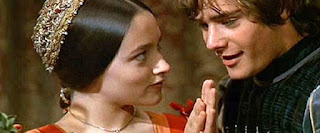I've established that I was a Black kid in L.A. who loved movies and loved seeing movies in Hollywood. Other Black folks took in films on Hollywood Blvd. or in nearby Westwood too. I attended a high school in Watts. Verbum Dei High, a Catholic school, had a Black and Mexican-American student body then. We didn't have a big fine arts budget at the school, so teachers took advantage of special student group rates to see prestigious films. Our English Lit. classes got on buses for field trips from Watts to Hollywood or Westwood to see FAR FROM THE MADDING CROWD, A MAN FOR ALL SEASONS and Paramount's popular 1968 version of Shakespeare's ROMEO AND JULIET directed by Franco Zeffirelli.
When Mom and Dad wanted to see a movie by themselves, not with us three kids in the backseat of the Plymouth for another Rivers Family Night at the Drive-In, they'd head to Hollywood to see subtitled foreign films -- especially if they starred Sophia Loren.
Sidney Poitier was a top Hollywood star in the 60s. He'd won the Best Actor Oscar for LILIES OF THE FIELD (1963). His TO SIR WITH LOVE was a 1967 hit. His GUESS WHO'S COMING TO DINNER (1967) and IN THE HEAT OF THE NIGHT (1967) were also box office hits. The later two were two of the five Oscar nominees for Best Picture. IN THE HEAT OF THE NIGHT won.
When we went to see Sidney Poitier movies, people of all colors were in the audiences. When IN THE HEAT OF THE NIGHT won the Oscar for Best Picture in the April 1968 telecast, the Oscars ceremony had been postponed for the first time in its history. The reason was our national mourning and the funeral of Dr. Martin Luther King, Jr. He was assassinated that month. Several big Hollywood stars had attended Dr. King's 1963 March on Washington for civil rights. Two months after that Oscars show and the killing of Dr. King, Senator Robert F. Kennedy, a presidential candidate, would be assassinated in Los Angeles at the Ambassador Hotel, home of the Coconut Grove nightclub, a famous spot where Hollywood's top stars went for dining and entertainment.
On local TV news, the Black community was excited to see a sharp, smart young sportscaster named Stan Duke on our Southern California CBS affiliate. You didn't see Black folks at the desks of local TV news teams in those days. Duke was a groundbreaker. Unfortunately. he got into serious trouble a few years after his debut. However, before there was sportscaster Bryant Gumble on our local NBC station, there was Stan Duke. In the 60s, there were integrated audiences waiting in line with tickets to see ABC's THE HOLLYWOOD PALACE. The network music variety show had great performers and famous guest hosts -- like Bing Crosby, Fred Astaire, Judy Garland and Joan Crawford. It was taped at the ABC Palace Theater in Hollywood. My family and I spent some time on the 20th Century Fox lot. Radio station KMPC had a contest that I entered. I was one of the winners and the prize was a family pass to a special weekend preview screening of FANTASTIC VOYAGE on the Fox lot.
On weeknight network TV, our family loved a new series about a Los Angeles high school. Watch the opening credits of ROOM 222, an ABC show that premiered in 1969.
Look at this trailer for Quentin Tarantino's ONCE UPON A TIME IN HOLLYWOOD. I watched it and had the same exact question I did while watching the 2013 film from the Coen Brothers, INSIDE LLEWYN DAVIS. That movie was set in New York City's Greenwich Village folk music scene of 1961. My question was -- Where are the Black people?
Click onto this link and watch the trailer for the movie: https://youtu.be/ELeMaP8EPAA.
There are more Black people in the opening credits to that 1969 ABC TV series than I saw in the trailer to ONCE UPON A TIME IN HOLLYWOOD, a Quentin Tarantino movie set it Los Angeles in 1969. I'm not just talking about actors with speaking parts in the talented cast of that trailer. I was also looking at the background actors. The extras. The Tarantino trailer tells me that Black people disappeared from the streets of Hollywood in 1969.
Maybe I'm being too sensitive.







No comments:
Post a Comment